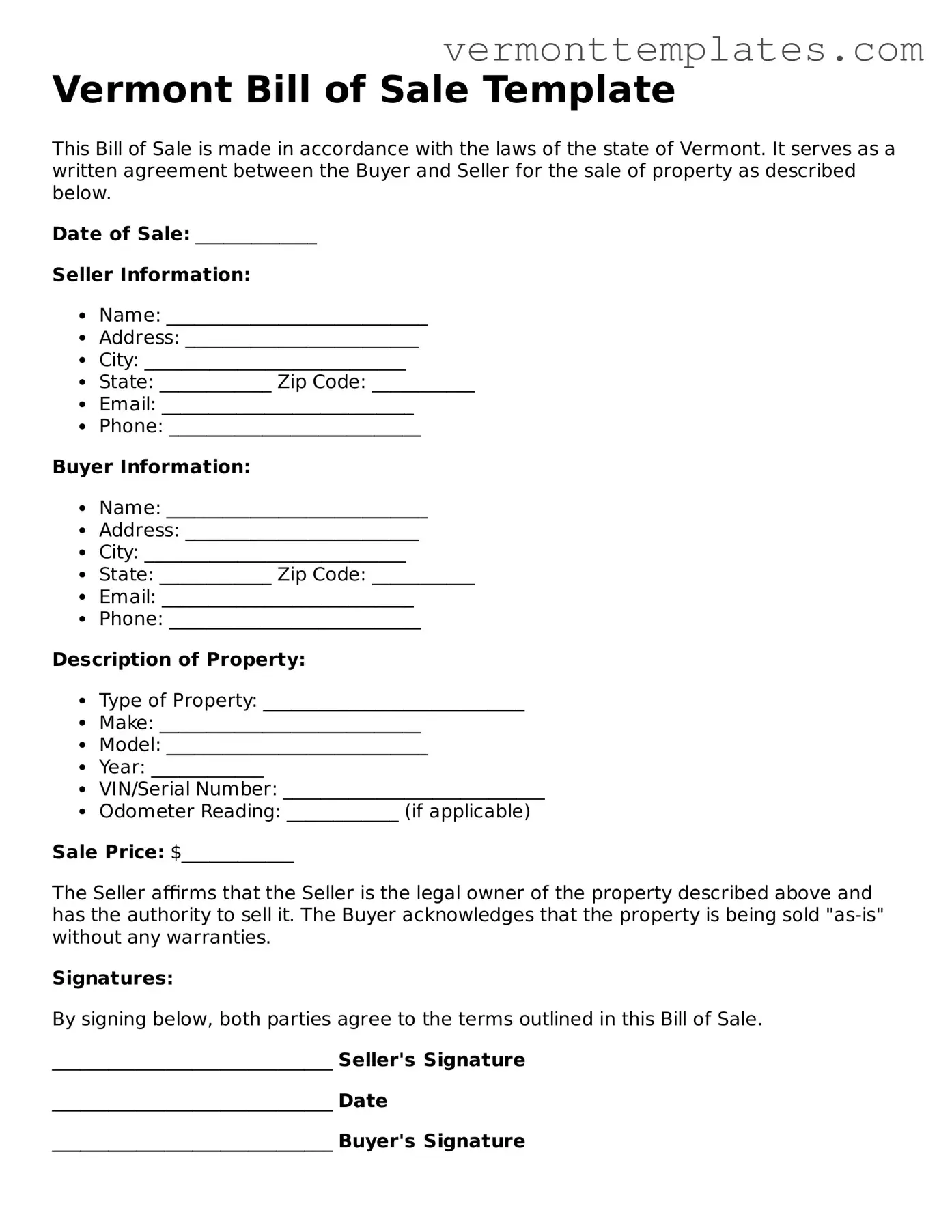Vermont Bill of Sale Template
This Bill of Sale is made in accordance with the laws of the state of Vermont. It serves as a written agreement between the Buyer and Seller for the sale of property as described below.
Date of Sale: _____________
Seller Information:
- Name: ____________________________
- Address: _________________________
- City: ____________________________
- State: ____________ Zip Code: ___________
- Email: ___________________________
- Phone: ___________________________
Buyer Information:
- Name: ____________________________
- Address: _________________________
- City: ____________________________
- State: ____________ Zip Code: ___________
- Email: ___________________________
- Phone: ___________________________
Description of Property:
- Type of Property: ____________________________
- Make: ____________________________
- Model: ____________________________
- Year: ____________
- VIN/Serial Number: ____________________________
- Odometer Reading: ____________ (if applicable)
Sale Price: $____________
The Seller affirms that the Seller is the legal owner of the property described above and has the authority to sell it. The Buyer acknowledges that the property is being sold "as-is" without any warranties.
Signatures:
By signing below, both parties agree to the terms outlined in this Bill of Sale.
______________________________ Seller's Signature
______________________________ Date
______________________________ Buyer's Signature
______________________________ Date
Witness (if applicable):
______________________________ Witness Signature
______________________________ Date
This document represents the whole agreement between the Seller and Buyer. Any modifications must be in writing and signed by both parties.
